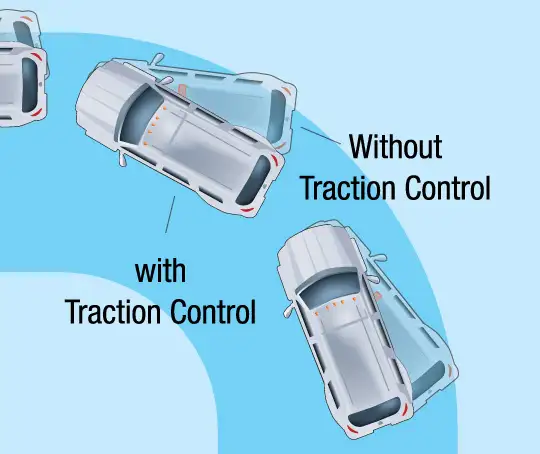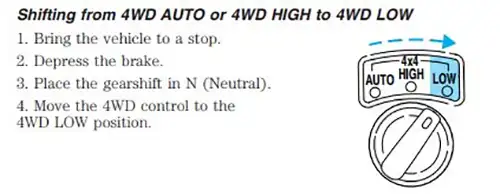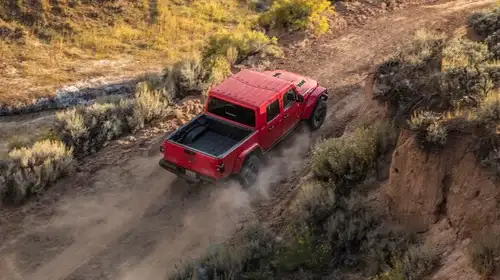
Unleashing the power of your 4×4 vehicle on unchartered terrains is the true essence of off-roading. This adrenaline-pumping activity, however, involves more than just driving on rough landscapes.
If you’re a novice or a seasoned off-road adventure traveler, understanding off-roading mechanics, the do’s and don’ts, and the preparations can determine the success of your adventure.
This comprehensive guide aims to equip you with the necessary knowledge for off-roading experiences.
Understanding Your Off-road Vehicle
Before you hit the trails, it’s vital to familiarize yourself with your 4×4 vehicle’s mechanisms that play a pivotal role in off-roading.
Traction Control

Traction control is a standard feature in modern 4x4s. The configuration of the system varies based on the conveyance’s intended use and design. It might encompass a basic binary option for activation or include several modes tailored to distinct grip scenarios.
In essence, this technique employs the braking system and/or the 4×4 mechanics to curtail instances of wheel slippage, redistributing torque from the tire to the terrain. For comprehensive insight into your transport’s particular traction control system, refer to your owner’s manual. Or enjoy watching Matt’ Off Road Recovery series to discover all about Off-Road you must know.
4WD High vs. 4WD Low

4WD High and Low pertain to the gearing system of the transfer case. These settings are intended for regular driving situations, providing maximum speed while compromising on torque levels.
On the other hand, 4WD Low mode supplies heightened torque capabilities at low speeds; however, it comes with the trade-off of restricted top speed capacity.
In scenarios where traversing slow-paced trails necessitating substantial power is imperative, engaging the 4WD Low mode is recommended.
Conversely, when the goal is to sustain momentum and engage in high-speed driving, opting for the 4WD High mode proves to be more suitable.
Locking Differentials
A locking mechanism for differentials immobilizes both the left and right wheels, guaranteeing their synchronized rotation. This functionality is of significance in upholding traction when navigating through off-road terrains.
The majority of contemporary four-wheel-drive vehicles facilitate the engagement of the lock through a straightforward act of pressing a button.
Essential Off-roading Equipment
Tires
The selection of tires you make can greatly influence your off-road adventure. It’s necessary to select tires that are suitable for the various surfaces and terrains you’ll come across.
Did You Know?
The market size of off-roading vehicles has surpassed USD 20 billion in 2022 and is believed to rise at over 8% CAGR from 2023 to 2032.
It’s vital to note that mud tires are distinct from those designed for sand or rocky terrains. Seeking advice from local tire specialists can provide you with the most optimal guidance in this regard.
Suspension
Steer clear of choosing an inexpensive body lift kit. The shock absorber of your automobile, a vital component for ensuring off-road dependability, soaks up the shock of the terrain, shielding the driver from its effects.
Given that additional gear introduction leads to heightened suspension demands, it’s imperative to ensure that the suspension system is sufficiently sturdy to manage this added load.
Bumpers
Custom front bumpers for cars, occasionally known as bull bars, serve to shield your automobile from impacts with rocks, trees, vegetation, and wildlife.
In specific driving situations, contemplating the addition of a rear bumper could also prove to be advantageous.
Maxtrax
This innovation, conceptualized by Australian inventor Brad McCarthy, is an apparatus positioned beneath your automobile’s wheels.
Its purpose is to restore both grip and forward motion in situations of being immobilized. This device enables you to gradually extricate yourself from challenging scenarios.
Winch
A winch stands as an active recovery apparatus. Yet, its safe operation demands particular expertise. It is advisable to select a winch of superior quality, as an inexpensive variant might prove inadequate during unfavorable moments.
Snatch Straps
Snatch straps represent a form of dynamic recovery straps. Their design incorporates the utilization of energy-absorbing elasticity to facilitate the process of extracting a conveyance from challenging conditions such as mud or snow.
It’s imperative to note that caution should be exercised when combining snatch straps with tow straps, given that tow straps lack the characteristic stretching ability to snatch straps.
Snorkel
Using a snorkel becomes necessary when submerging your automobile in water depths. This device pulls in the air in close proximity to the vehicle’s top, effectively inhibiting water intrusion into the engine via the air intake system.
Worst-Case Scenarios
First-Aid Kit
It is recommended to have a simple initial-aid kit on hand for tending to minor injuries and controlling bleeding until assistance is available.
Seat-belt Cutter & Glass Breaker
In certain situations, there could arise circumstances necessitating the swift cutting of a seat belt, shattering of a window, and prompt egress from transport.
Fire Extinguisher
Having a fire suppressant device within the conveyance cabin can mitigate the potential for fire-related harm to your automobile.
Interesting Fact
The first ever four-wheel drive was made in 1903 by Jacobus & Hendrick-Jan Spijker.
Warm Clothes
Be sure to make necessary preparations for situations you could come across.
Have an attire with you to endure a full day outdoors, encompassing insulation for colder weather.
Food & Water
Ensure a supply of sustenance and hydration for all passengers within the automobile.
It is recommended to have a provision of no less than a singular granola bar and a solitary water bottle allocated per seating arrangement.
Be Fully Aware of What You’re in For
Prepare for Recovery
It’s good to be prepared for challenges during your journey. Once you notice a decline in your progress, take prompt action by halting your automobile.
Avoid the temptation to wait until it becomes immobilized before initiating recovery measures.
Airing Down
A strategy for preserving grip involves reducing your tire pressure to approximately 20 to 25 psi.
This action extends the portion of the tire’s tread that makes contact with the surface, thereby amplifying your automobile’s traction on the landscape.
Activating Lockers
In situations with low traction, it’s primary to engage the locks to guarantee that both wheels rotate at an identical speed.
Understanding Different Off-road Conditions

Mud, Sand, and Snow
The approach to managing these situations is quite similar with regard to enhancing grip.
Navigating through muddy terrain involves reducing tire pressure to approximately 20 pounds, engaging 4WD high mode, and deactivating the traction control system.
Rock
Engaging in rock crawling demands a systematic and accurate approach to maneuvering and applying force.
Utilizing a lower gear, maintaining a controlled and steady throttle, and activating the designated “Rock” mode on your traction control system all prove to be indispensable components for success in this activity.
Water Fording
Prior to traversing significant bodies of water, immerse yourself in the watercourse to fathom its profundity and the substratum it conceals.
Should the water’s profundity surpass your frontal protection, an apparatus for underwater breathing shall be requisite.
Final Considerations
Before you hit the trails, it’s good to familiarize yourself with your 4×4 vehicle’s mechanisms that play a pivotal role in off-roading. The selection of tires you make can greatly influence your off-road adventure. It’s vital to select tires that are suitable for the various surfaces and terrains you’ll come across.
A winch stands as an active recovery apparatus. Yet, its safe operation demands expertise. It is advisable to select a winch of quality, as an inexpensive variant might prove inadequate during captious moments.
When submerging your automobile in water depths, using a snorkel becomes essential. This device pulls in the air in close proximity to the vehicle’s top, effectively inhibiting water intrusion into the engine via the air intake system.
It’s pivotal to be prepared for challenges during your journey. Once you notice a decline in your progress, take prompt action by halting your transport. Avoid the temptation to wait until it becomes immobilized before initiating recovery measures. Happy off-roading!












